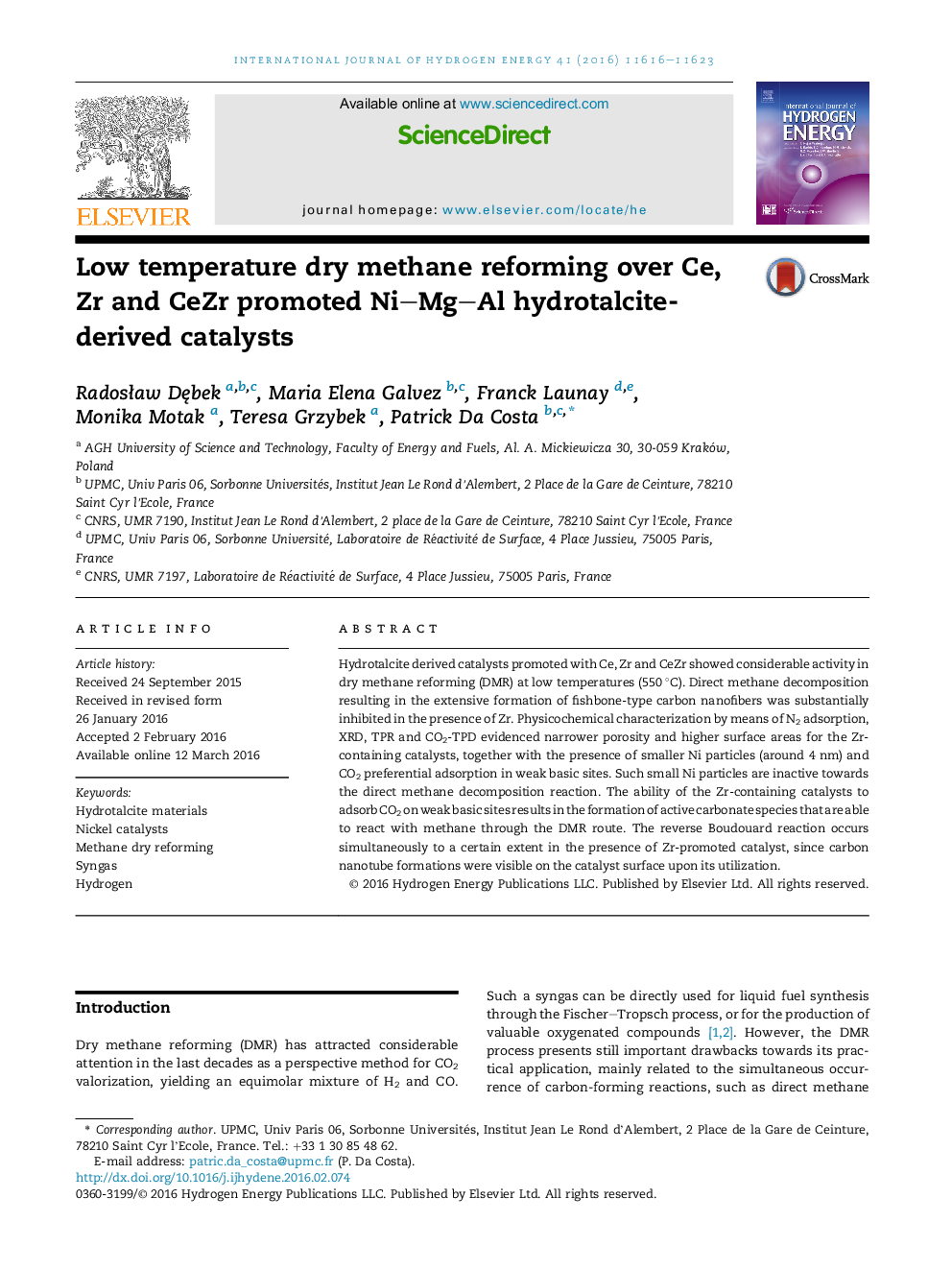| Article ID | Journal | Published Year | Pages | File Type |
|---|---|---|---|---|
| 1268491 | International Journal of Hydrogen Energy | 2016 | 8 Pages |
•Hydrotalcite-derived catalysts promoted with ce, Zr and CeZr were prepared.•The presence of Zr determines their activity and selectivity in DMR.•Zr inhibits the formation of carbon fibers through CH4 decomposition.•Enhanced stability is expected for Zr-promoted catalysts.
Hydrotalcite derived catalysts promoted with Ce, Zr and CeZr showed considerable activity in dry methane reforming (DMR) at low temperatures (550 °C). Direct methane decomposition resulting in the extensive formation of fishbone-type carbon nanofibers was substantially inhibited in the presence of Zr. Physicochemical characterization by means of N2 adsorption, XRD, TPR and CO2-TPD evidenced narrower porosity and higher surface areas for the Zr-containing catalysts, together with the presence of smaller Ni particles (around 4 nm) and CO2 preferential adsorption in weak basic sites. Such small Ni particles are inactive towards the direct methane decomposition reaction. The ability of the Zr-containing catalysts to adsorb CO2 on weak basic sites results in the formation of active carbonate species that are able to react with methane through the DMR route. The reverse Boudouard reaction occurs simultaneously to a certain extent in the presence of Zr-promoted catalyst, since carbon nanotube formations were visible on the catalyst surface upon its utilization.
Graphical abstractFigure optionsDownload full-size imageDownload as PowerPoint slide
